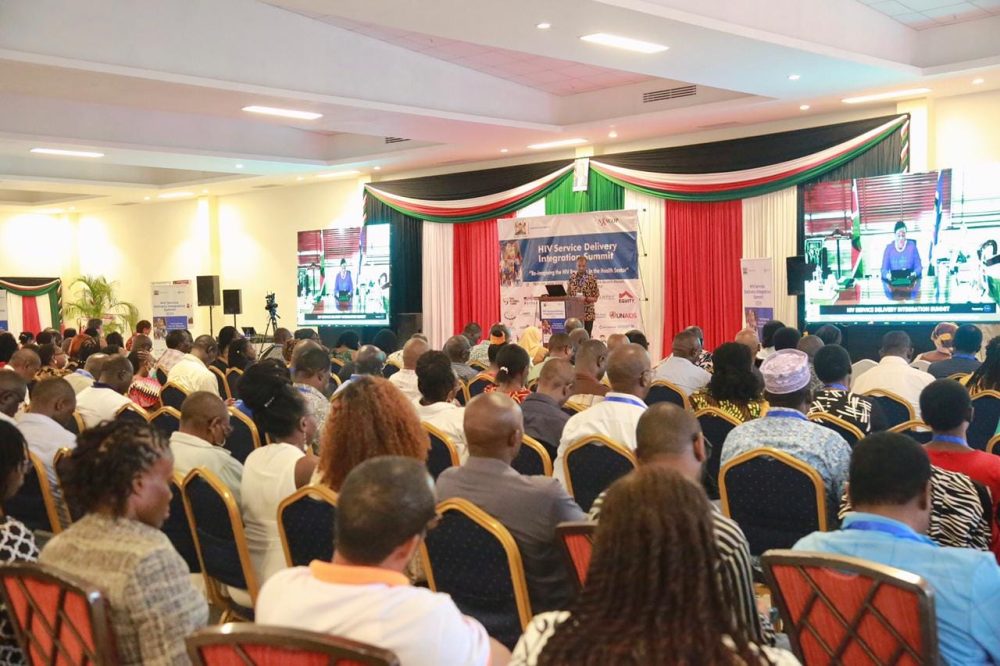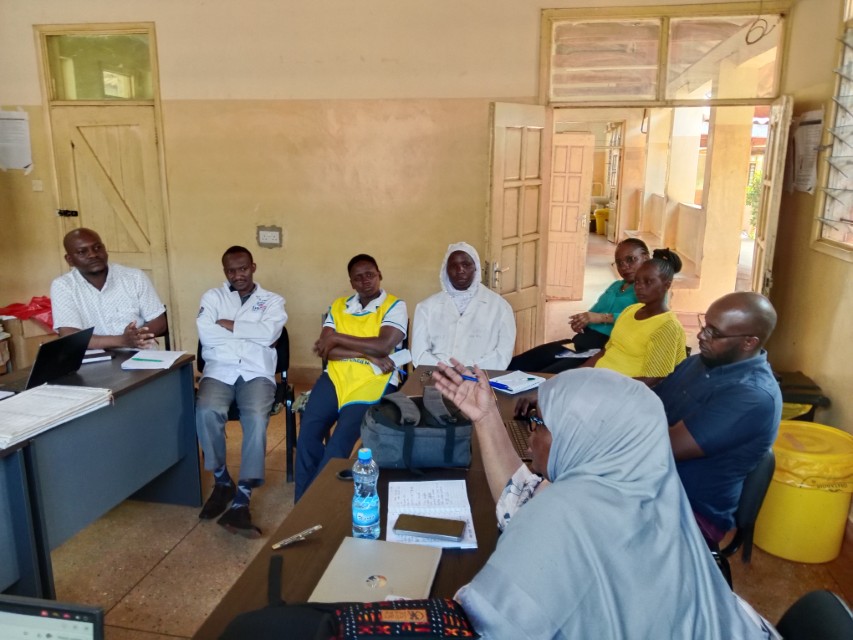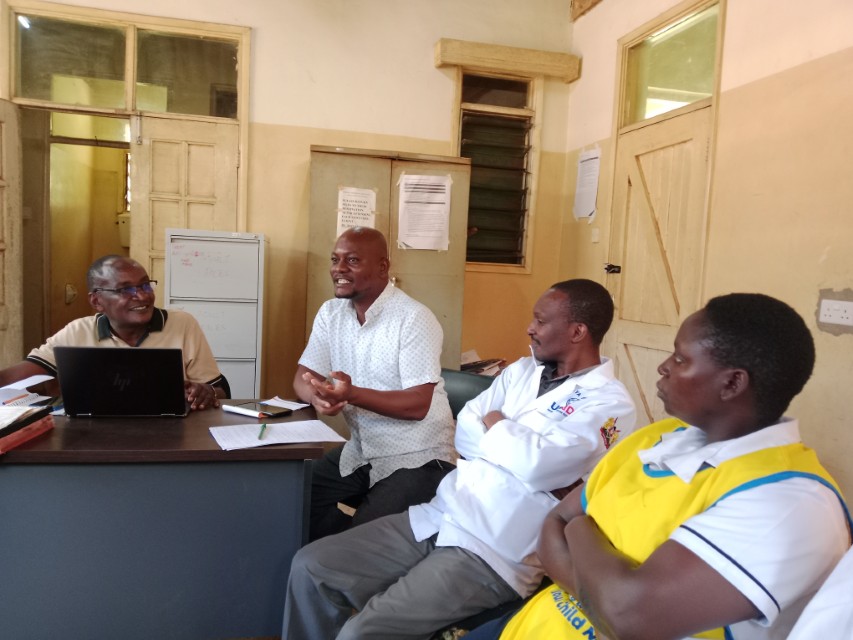How Kilifi County, supported by LVCT Health, is advancing integration of HIV and TB services for improved quality of life for People Living with HIV

In the quiet rural corners of Kenya’s coastal region, a small hospital in Kaloleni Sub-County, Kilifi County, is making a big difference—one patient at a time.
Jibana Sub-County Hospital may not be widely known, but behind its modest walls lies a story of resilience, innovation, and hope. It is a story that exemplifies how integrating health services can transform communities and save lives.
Decades of foreign aid have propelled Kenya to remarkable milestones in its HIV and TB response, leading to a decline in incidence, prevalence, and mortality. Today, Kenya is on the path towards exceeding the global 95-95-95 targets, with greater access to HIV testing and optimized care and treatment services for eligible populations.
According to the National AIDS & STI Control Programme (NASCOP), over 1.3 million people living with HIV (PLHIV) are receiving treatment in Kenya, thanks to the decentralization of HIV services and strong collaboration between the various stakeholders, including counties and communities.
Despite these achievements, the traditional vertical programming of HIV and TB services has led to fragmented healthcare delivery, resulting in high costs, parallel systems, and gaps in quality—especially for clients whose health needs span beyond HIV, such as those with non-communicable diseases, hypertension, diabetes, cervical cancer, and mental health conditions.
Dr. Philip Masaulo, the Deputy Chief of Party for LVCT Health’s PEPFAR-funded USAID Stawisha Pwani project, highlights that integrating HIV and TB services into routine healthcare, amid reduced funding, has helped streamline services across the project’s supported facilities. This shift is not just policy; it is about real people managing complex health challenges in resource-constrained settings. Among them is Rehema Nzemeri, a clinical officer at Jibana Hospital, who recalls how, even before official directives, her team took proactive steps to streamline care.
Advancing Kenya’s Integration Journey

Last year, Kenya took a bold step by convening a national HIV Service Delivery Integration Summit to rethink and align its HIV response toward a more holistic and patient-centered care.
Dr. Masaulo notes that this strategy, combined with lessons from the U.S. Government’s Stop Work Order (SWO) for all implementing partners, underscored the urgent need to integrate stand-alone Comprehensive Care Clinics (CCCs) into routine services at government health facilities, including 370 facilities supported by LVCT Health’s USAID Stawisha Pwani project in Kilifi, Mombasa, Kwale, and Taita Taveta counties.
“This approach offers a more efficient way to provide holistic care, removing barriers to access and utilization that were common in the standalone clinics,” Masaulo explains.
Integration broadly refers to unifying various health services and programs to ensure individuals and communities receive coordinated, continuous, and comprehensive care that meets their needs over time and across all levels of the health system (WHO). The goal is to improve patient outcomes, improved access to HIV/TB services, efficient use of resources, better data monitoring, strengthened health systems and reduction of HIV related stigma.

Rehema shares, “When we saw the challenges our patients faced, multiple visits, stigma, long wait times—we decided to integrate our services”. The hospital combined key departments: the laboratory, clinic, pharmacy, and triage, creating a seamless flow for patients. This move was driven by necessity; understaffing meant that efficiency was crucial for quality care.
The staff received specialized training to handle the broader scope of services, ensuring that a client visiting for HIV testing could quickly be linked to care and treatment—all under one roof. The hospital also replaced the traditional yellow cards for HIV care, instead using patients’ regular hospital cards, with strict measures to protect their privacy.
The evolving financial landscape and the need for locally tailored solutions underscore the urgency of rethinking Kenya’s HIV response within the framework of the Universal Health Coverage (UHC) agenda, across stakeholders, as noted during the HIV Service Integration Summit held last year in Mombasa.
Rehema shares, “Patients feel more comfortable because they are not singled out. They can access all their health needs in one place, which encourages adherence and retention in care. “I urge all facilities to embrace this approach—it is the future of healthcare.”
Understanding the importance of patient feedback, Jibana Hospital implemented simple yet effective ways to hear from their clients—questionnaires, audio recordings for those who can’t read or write. This feedback has been overwhelmingly positive, confirming that integration is working.
In collaboration with Kilifi County Health Management Team (CHMT), LVCT Health has begun rolling out HIV/TB service integration models to ensure that over 25,474 people living with HIV in the county receive comprehensive, high-quality care. Jibana Hospital has significantly enhanced the integration of HIV and TB services within its outpatient department.
These efforts are also being replicated in other project-supported counties, thus preventing complications and facilitating improved health outcomes for people living with HIV and TB.
A Hopeful Future

Despite these successes, hurdles remain. Understaffing, gaps in staff skills—especially in managing HIV and TB from start to finish—and limited technological resources pose ongoing challenges. Yet, the dedication of healthcare workers like Rehema keeps the momentum going.
Dr Masaulo notes that, while HIV and TB services are currently offered free of charge, costs for managing NCD-related conditions remain a challenge for most of the affected people.
To promote the uptake and sustained delivery of holistic care, the project is encouraging people living with HIV to register for the Social Health Authority (SHA), a government universal health coverage initiative aimed at ensuring access to quality healthcare services without financial hardship.
Their efforts are echoing beyond Jibana, shaping national policies and inspiring other facilities to follow suit.
Jibana Hospital’s journey is a testament to what is possible when health services are designed around people’s needs—cohesive, efficient, and stigma-free. Thanks to initiatives like USAID’s Stawisha Pwani project, which supports integrated HIV and TB care alongside nutrition and health system strengthening, communities are beginning to see a brighter, healthier future.
“Patients feel more comfortable because they’re not singled out. They can access all their health needs in one place, which encourages adherence and retention in care. “I urge all facilities to embrace this approach—it’s the future of healthcare.”-Rehema Nzemeri, clinical officer, Jibana Health Facility
Story by Simon Templer Kodiaga and Festus Mutua (Reviewer)

